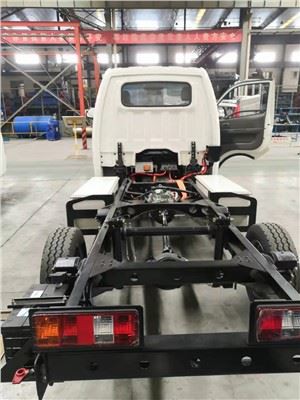On Average, How Many Miles Does a Car Last? A Comprehensive Guide

When it comes to understanding the longevity of a car, many factors come into play, from maintenance practices to the type of vehicle. This article aims to explore the average lifespan of vehicles, what affects their longevity, and practical ways to increase the mileage a car can achieve.
Understanding Car Lifespan
The lifespan of a car is typically measured in miles. On average, most cars are built to last between 150,000 and 300,000 miles. However, various factors influence these numbers, and understanding them can help you get the most out of your vehicle.
Factors Influencing Car Longevity
A variety of factors can affect how many miles a car lasts:
1. Maintenance Practices
Regular maintenance can significantly extend a car’s life. This includes oil changes, brake inspections, tire rotations, and fluid checks. Skipping routine maintenance can lead to bigger issues down the line.
2. Driving Habits
Aggressive driving, such as rapid acceleration and hard braking, can wear out components faster. On the other hand, smooth driving habits can conserve the life of a vehicle.
3. Type of Vehicle
Some vehicles are designed for longevity. For example, luxury brands often last longer than economy models. Additionally, trucks tend to have a longer lifespan than smaller cars due to their robust construction.
4. Environment
The climate and driving conditions can influence car durability. Vehicles frequently driven in harsh climates or on rough terrains may not last as long as those driven in temperate conditions.

5. Quality of Parts
The quality of components and parts used can impact a vehicle’s longevity. Higher-quality parts may have a longer lifespan and perform better over time.
Average Mileage for Different Types of Cars
Below is a table showcasing the average lifespan of various vehicles based on industry standards.
| Vehicle Type | Average Lifespan (Miles) |
|---|---|
| Compact Cars | 150,000 – 200,000 |
| Midsize Cars | 200,000 – 250,000 |
| SUVs | 200,000 – 300,000 |
| Luxury Cars | 200,000 – 300,000 |
| Trucks | 250,000 – 300,000 |
Maximizing Your Car’s Lifespan
To get the most miles out of your car, consider the following tips:
1. Regular Maintenance
Establishing a regular maintenance schedule can prevent minor issues from escalating into costly repairs.
2. Keep It Clean
Regularly washing your car can prevent rust and corrosion, especially in areas with harsh weather conditions.
3. Use Quality Fuel
Using high-quality fuel can improve engine performance and longevity, whereas low-quality fuel can lead to problems over time.

4. Monitor Tire Pressure

Keeping tires properly inflated improves fuel efficiency and decreases wear and tear.
5. Pay Attention to Warning Lights
Responsive action to dashboard warning lights can prevent minor issues from becoming significant problems.
Real-Life Examples of Long-Lasting Cars
Certain models have established a reputation for longevity. Here are a few examples:
Toyota Camry
The Toyota Camry is known for consistently reaching over 250,000 miles with proper maintenance.
Honda Accord
Honda Accords are another car that often lasts well past the 200,000-mile mark, thanks to their reliable engineering.
Subaru Outback
Subaru Outbacks have a loyal following and are often reported to last 200,000 miles or more, particularly in regions with rugged terrain.
The Role of Technology in Car Longevity
Modern cars are increasingly equipped with technology that can enhance durability:
1. Engine Management Systems
Advanced engine management systems monitor performance and optimize fuel efficiency and emissions.
2. Regular Software Updates
Like smartphones, modern vehicles often require software updates to improve performance and fix bugs, which can enhance overall longevity.
Cost vs. Lifespan: Making the Right Decision
When purchasing a car, consider the cost in relation to its expected lifespan. Below is a comparative analysis.
| Vehicle Type | Average Lifespan (Miles) | Expected Maintenance Costs Over Life |
|---|---|---|
| Compact Cars | 150,000 – 200,000 | $5,000-$8,000 |
| SUVs | 200,000 – 300,000 | $7,000-$10,000 |
| Luxury Cars | 200,000 – 300,000 | $15,000-$25,000 |
Eco-Friendly Practices for Longer Car Life
Adopting eco-friendly practices not only contributes to the environment but can also prolong your car’s lifespan:
1. Eco-Friendly Driving
Practice smoother driving habits: avoid hard stops and quick accelerations.
2. Recycling Parts
When replacing parts, consider recycling old components to reduce waste and environmental impact.
3. Choose Sustainable Brands
Select vehicles from brands known for sustainable practices in manufacturing.
FAQ Section
1. How can I tell if my car is aging?
Signs that your car is aging include frequent breakdowns, increased maintenance costs, and declining performance.
2. What are the most common issues that shorten a car’s lifespan?
Common issues include engine problems, transmission failure, and brake wear due to inadequate maintenance.
3. Can driving in extreme weather affect my car’s lifespan?
Yes, extreme heat, cold, and humidity can cause wear on various components, accelerating aging.
4. Should I Opt for Extended Warranties?
Extended warranties can be beneficial if you’re purchasing a vehicle known for having issues, but they may not be necessary for reliable brands.
5. How often should I service my car?
Regular service intervals generally fall between 5,000 to 7,500 miles, depending on the make and model of your vehicle.
6. Is it worth repairing an older car?
If the costs of repairs are significantly lower than purchasing a new vehicle, it may be worth maintaining an older car, especially if it has sentimental value or is otherwise in good condition.
